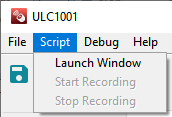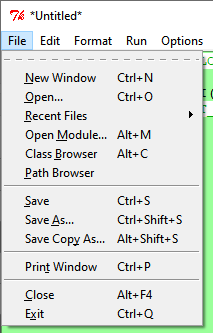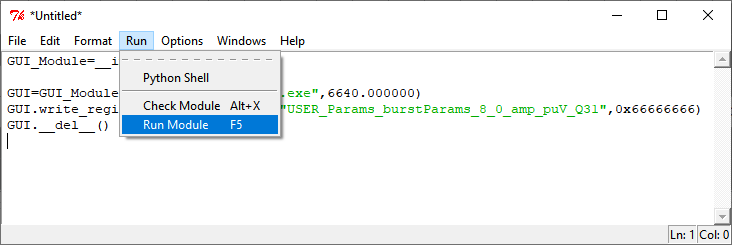SLAU880C December 2022 – May 2024 ULC1001
- 1
- Abstract
- Trademarks
- 1General Texas Instruments High Voltage Evaluation (TI HV EVM) User Safety Guidelines
- 2Introduction
- 3Getting Started
- 4System Overview
- 5GUI Overview
- 6Hardware Design Files
- 7Revision History
5.5.9 Script Recording
The GUI register read/write operations can be recorded in a script file, stored, and replayed as needed. Saving and running a recorded script is similar to saving and loading a configuration file, as described in Section 5.5.2. However, a script recording has the benefit of saving the exact sequences of GUI button clicks and setting changes.
The Script Recording Window is launched from the Script Menu, as shown in Figure 5-17, or by the shortcut in the Tools Bar. The Python Recording Window flashes green, as shown in Figure 5-18, when the Start Recording button is pressed. The window turns white when Stop Recording button is pressed.
A Script can be saved as shown in Figure 5-19 and a script can be re-opened and run as shown in Figure 5-20. Some commands require a wait time for the system to initialize or be put into active mode. Inserting the Python Time library and using wait commands is possible.
 Figure 5-17 Script Menu
Figure 5-17 Script Menu Figure 5-18 Python Recording
Window
Figure 5-18 Python Recording
Window Figure 5-19 Saving Recorded Python
Script
Figure 5-19 Saving Recorded Python
Script Figure 5-20 Running Recorded Python
Script
Figure 5-20 Running Recorded Python
Script